Commune 13, Medellin Rises From Despair
Triskaidekaphobia is an irrational fear of the number thirteen, but in the case of Commune 13 on the hillsides of Medellin, Colombia that fear has a very historical and rational basis. Perhaps no place on earth has been as unlucky as Commune 13 as I discovered on a recent guided tour by Adventures Abroad into what, only a few years ago, would have been an absolute ‘no go zone’. Please join me and local guide Jean Canesta as we explore an area of Medellin that has literally risen from the ashes of death, despair and drugs to become a beacon of hope for a young generation that never experienced the horrors of Pablo Escobar’s reign of terror.
Medellin – A Brief History
Medellin at 2.5 million people is Colombia’s second largest city, but it has little of the colonial charm of Bogota or Cartagena. It is a city of red brick communes, sixteen in all, with the general rule that the higher up the mountainsides, the poorer the community. This is a view of the city from one of the miradors that can be reached by Metrocable or gondola lifts as most people call them. There are presently three of these in Medellin.
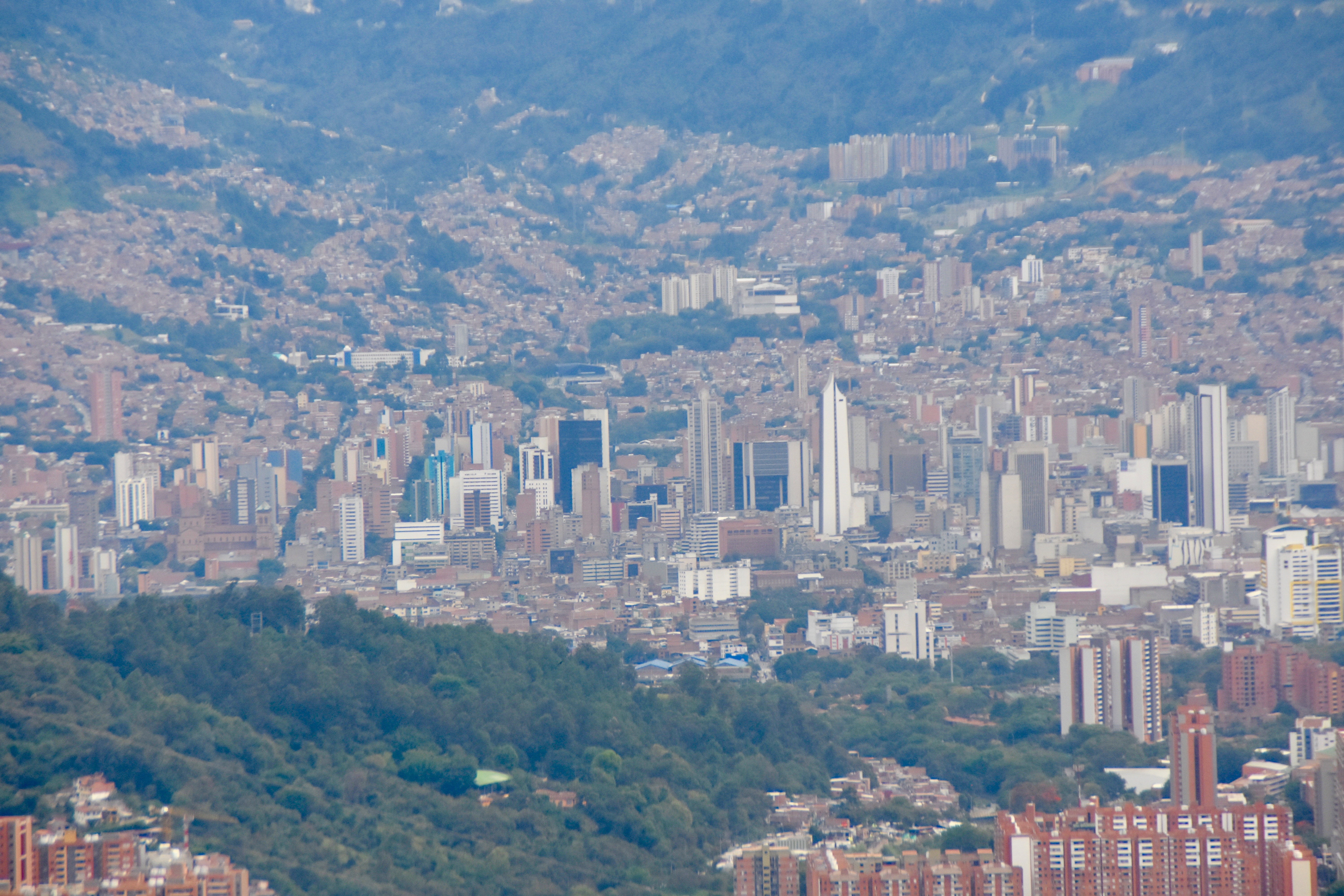
What Medellin lacks in charm it makes up for in progressive innovation, being named the most innovative city in the world in 2013 by the respected Urban Land Institute. It has Colombia’s only metro system along with the aforesaid Metrocables that link directly to the metro stations as well as a functioning highway system that is not perpetually traffic clogged. This probably is not the image most people have of Medellin which is almost always linked to Pablo Escobar and the cocaine cartel once based in the city.
The incredibly gripping and violent Netflix series Narcos is apparently a quite factual account of the rise and demise of Pablo Escobar and the iron fist he held over Medellin throughout the 1980’s up until his death in 1993.
What the series does make clear is that the drug cartels were only one piece of a much larger puzzle that was essentially a multi-party civil war that debilitated Colombia for over forty years. Arguably responsible for a lot more deaths and violence than the drug lords were the right wing paramilitaries and their principal opponents, the left wing guerrilla groups, notably FARC (Revolutionary Armed Forces of Colombia) and ELN (National Liberation Army). Both the right and left wing groups were also heavily involved in the drug trade as well and they did not limit their activities to the Amazonian jungles. This is where the story of Commune 13 intersects with the bigger picture of the mess that was Medellin until only a few years ago.
Commune 13 Tour
To get to Commune 13, we all pile into this not inconspicuous tourist bus in the wealthy commune of El Poblano where we are staying and begin the gradual ascent up the south side of the Andean foothills. The higher we go the narrower the streets and the poorer looking the housing. Eventually the bus can go no further and we proceed on foot.
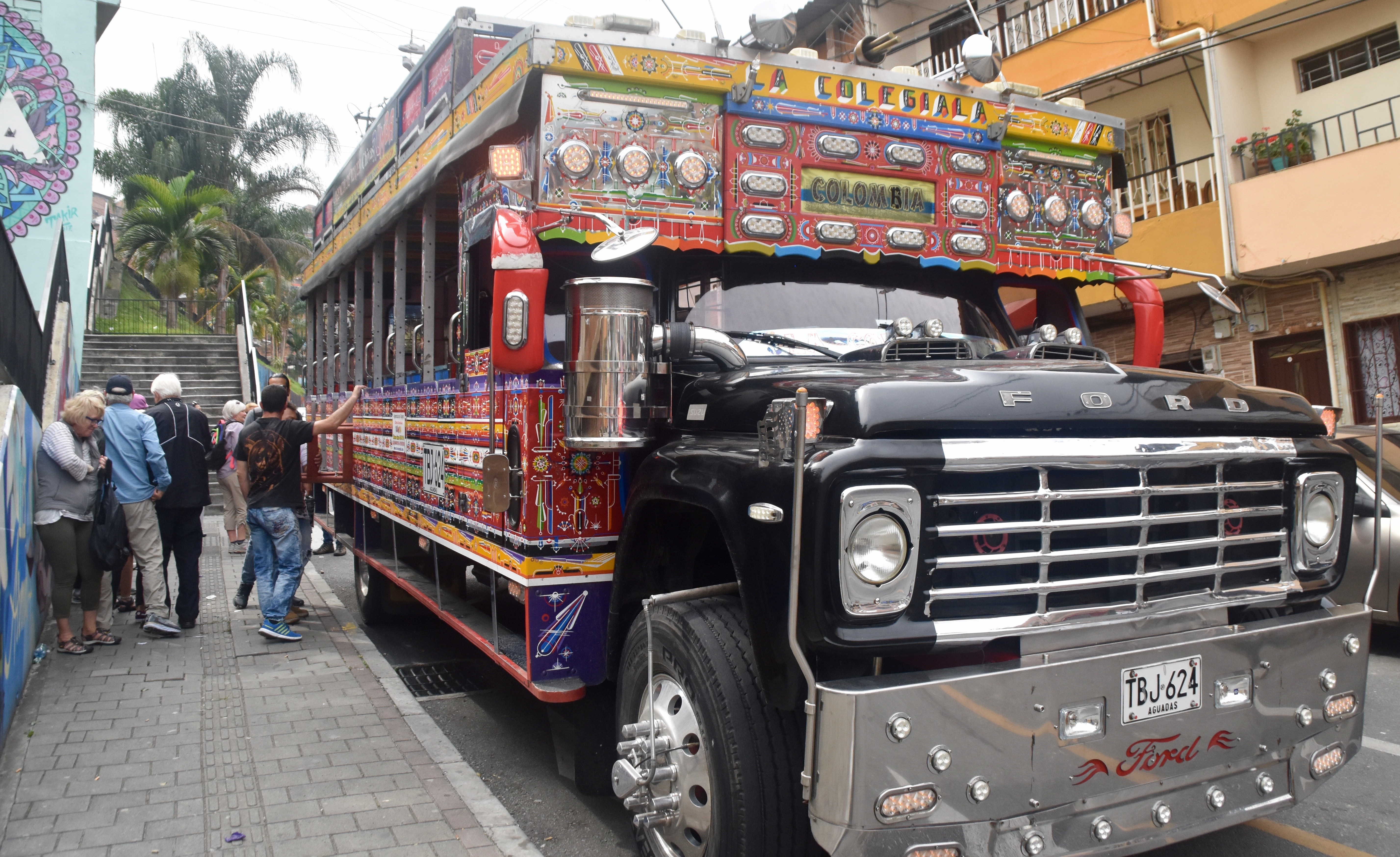
Commune 13 has no roads wide enough for cars and the only way to get around is by motorcycle or on foot. However, as I mentioned, Medellin is a city of innovation and it has largely eliminated the need for residents to climb hundreds of stairs to get to their humble residences by installing a series of covered escalators that even the dogs use.
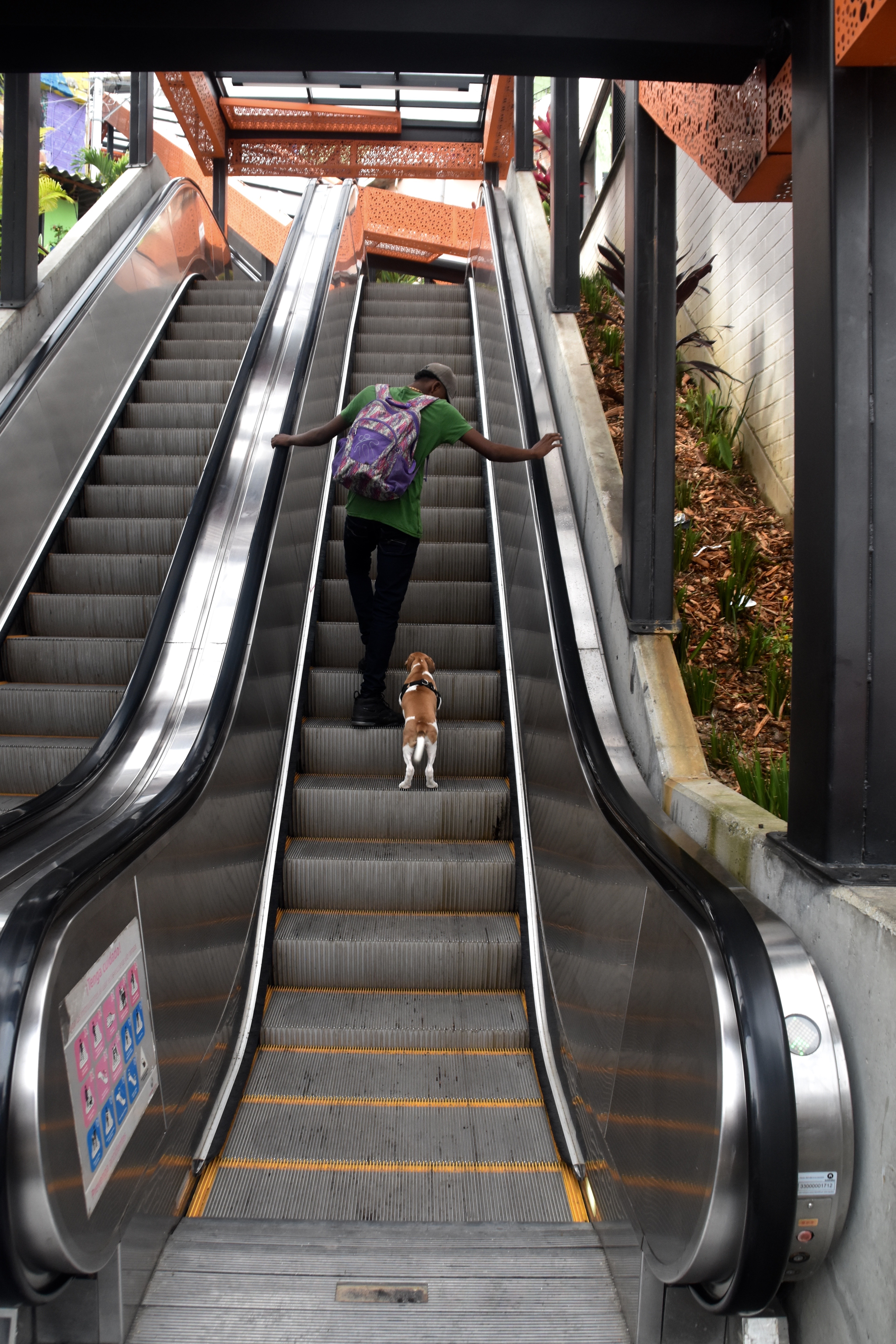
Instead of being totally exhausted, we arrive at the top of the final escalator in good form and ready to listen to Jean’s description of the events that transformed Commune 13. Before that I take a look around and there is no doubt that at first glance, this place fits every stereotype of a Latin American barrio.
This is the view looking down the top of the highest escalator.
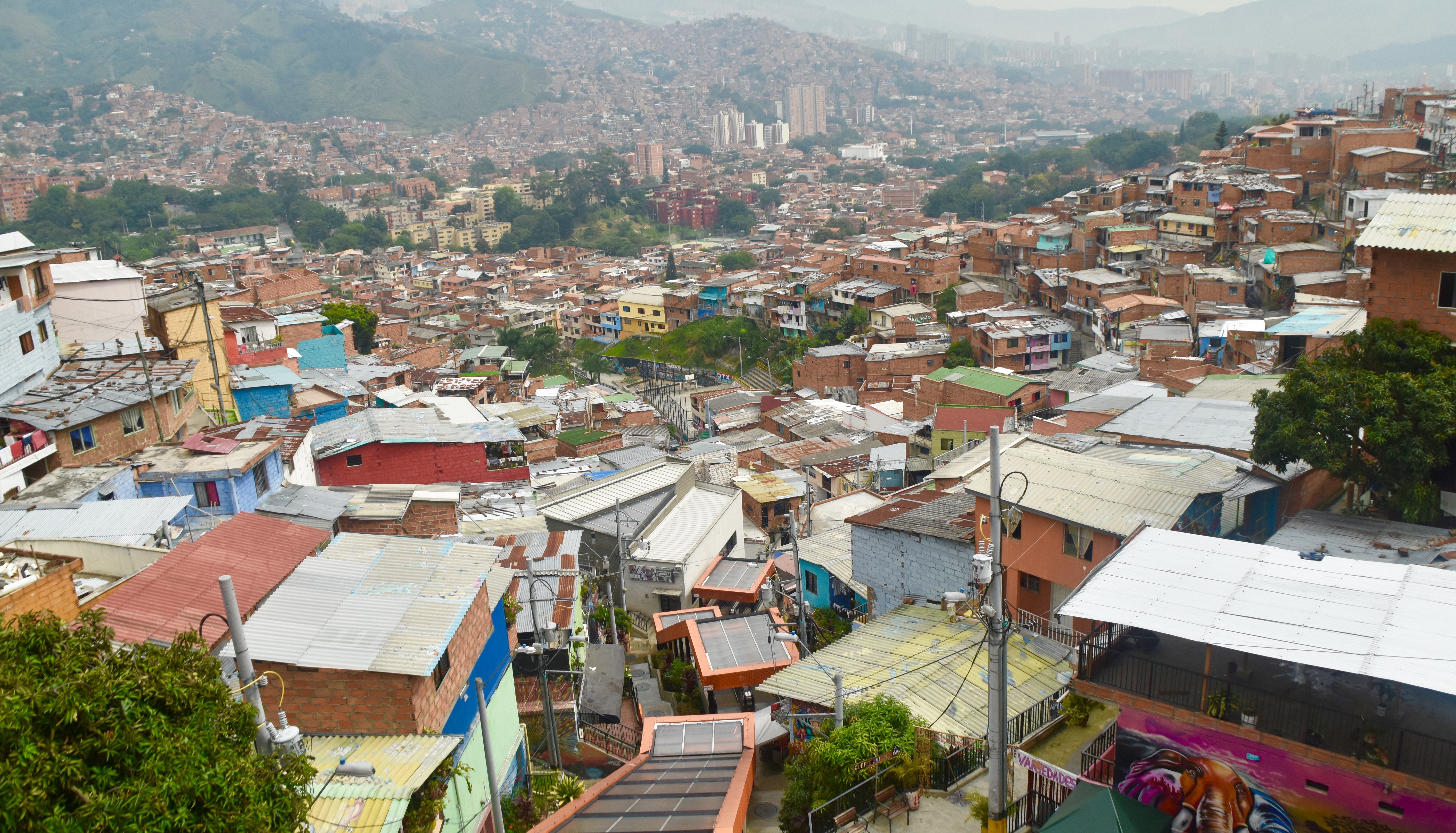
This is the view looking around.

And up.
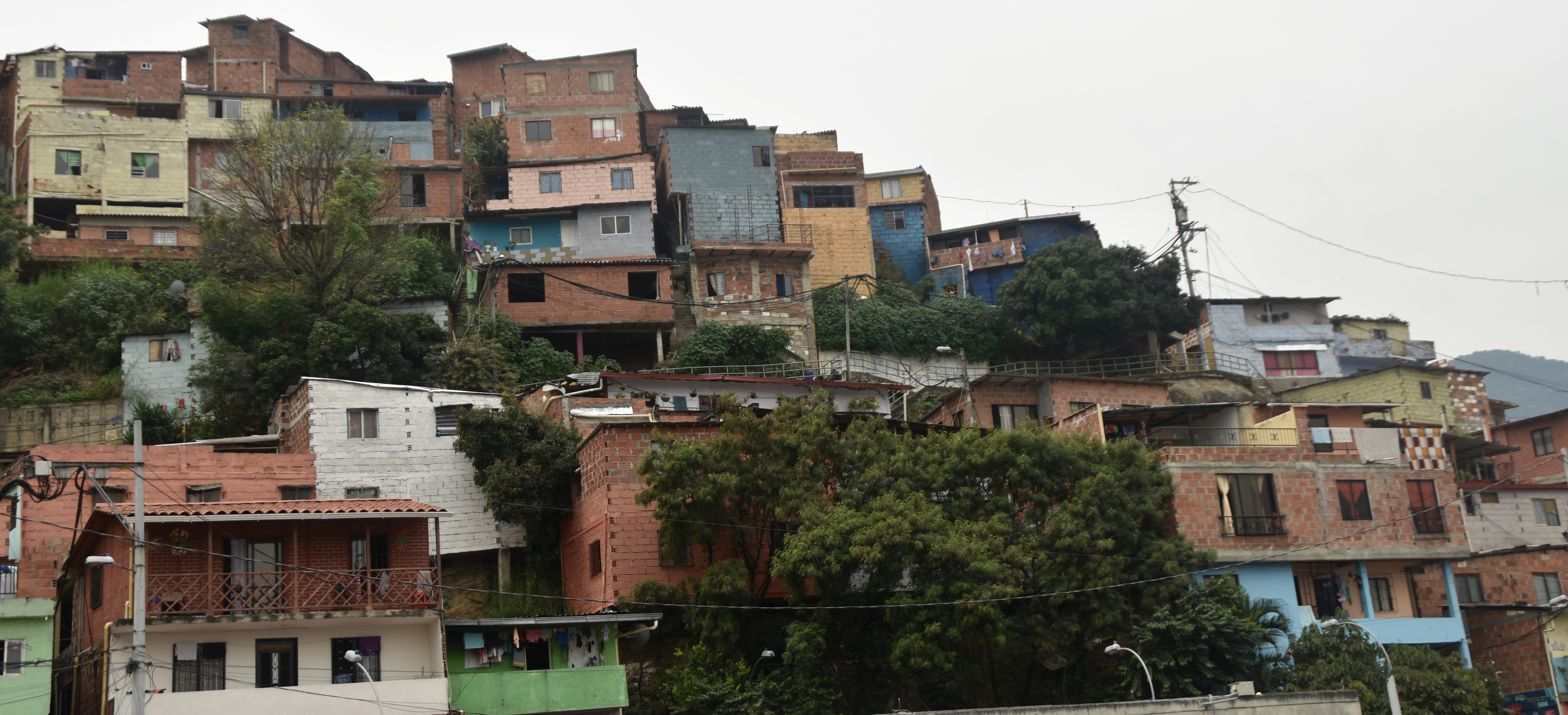
However on closer inspection it is clear that these dwellings all have electricity, running water and sewage services. The place is reasonably clean, quiet and doesn’t stink like a lot of barrios. Most notably, it’s apparently safe for tourists to walk around without fear of getting mugged, assaulted or worse – something that would have been unthinkable not that long ago. In fact there are actually tourist police strategically placed in various areas in the Commune.
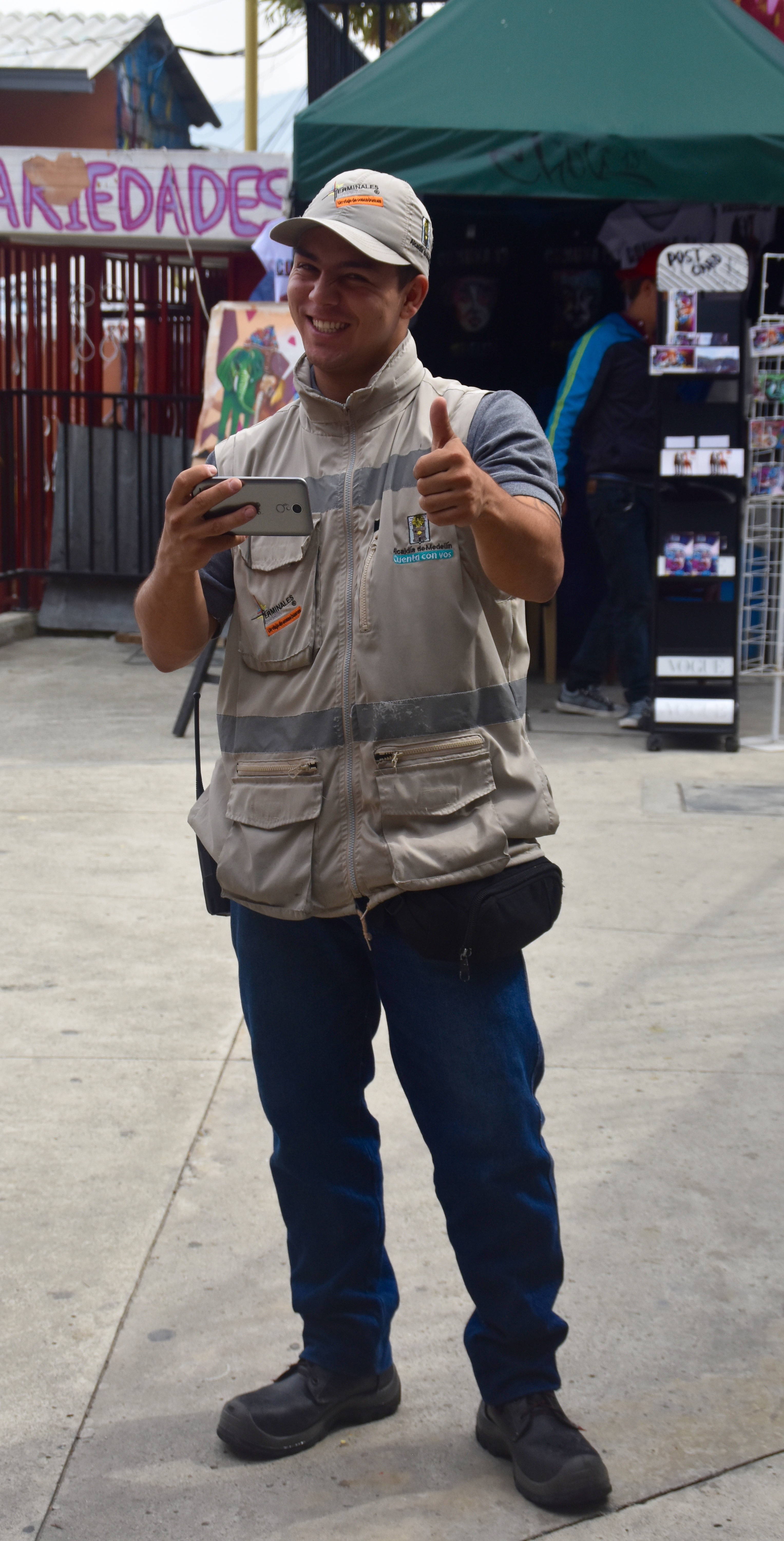
The final thing I note about Commune 13 that tells me this is no ordinary barrio, is the incredible amount of top quality street art, about which more a little later. Also, note the motorcycle delivery van at the forefront of the picture. There are a number of businesses in Commune 13 that get their merchandise delivered by these hybrid vehicles.
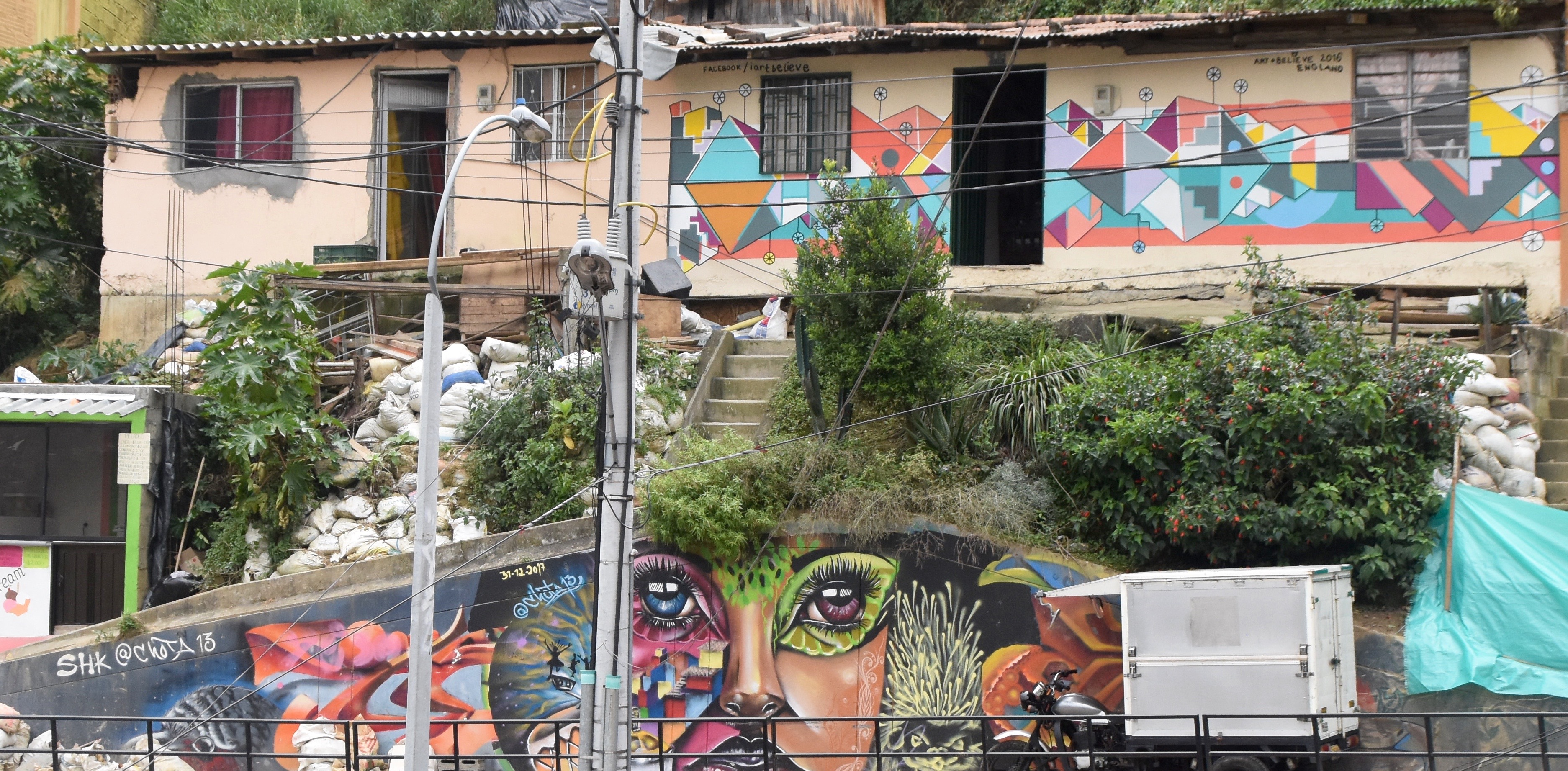
Jean and Andres Fernandez, our Adventures Abroad tour leader, shepherd our group to an area best described as a mini plaza where we can sit on a balcony with the city of Medellin to our backs and there Jean gives us the in depth story of the transformation of Commune 13.
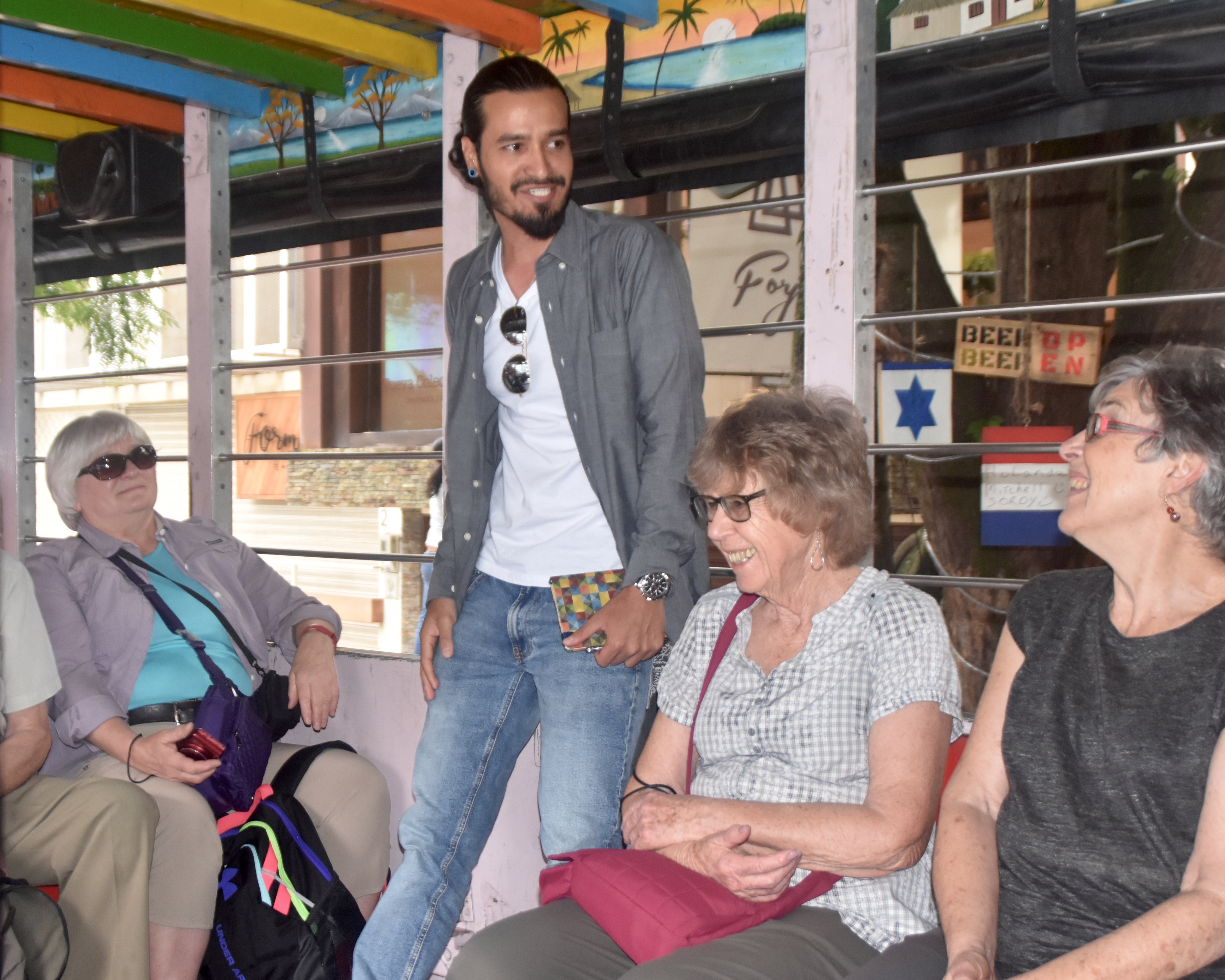
Surprisingly to me, Commune 13’s period of uncontrolled violence did not start with Pablo Escobar or any of the drug cartels, but rather the left wing guerrillas. True enough that Escobar recruited many of his most dangerous killers from the dispossessed of the barrio and the murder rate was astronomical, but it was after his death that things got even worse. Realizing that the cocaine business was the easiest and cheapest way to finance their alleged revolutionary aims, leftist guerrillas literally took over Commune 13 in the 1990’s and ran it like their own fiefdom. It was during this time that Commune 13 became the official ‘murder capitol of the world’. It was also the beginning of the street art movement. The first mural to appear in Commune 13 was put up by the leftists and featured that great phony liberator, Che Guevera. It was intended to mark the area as being under leftist control and apparently was repeatedly defaced by the locals who would clandestinely put up their own murals protesting the occupation.
As Jean continued with his narrative these two young children gradually overcame their shyness and couldn’t stop staring at the group of all white strangers in their midst.
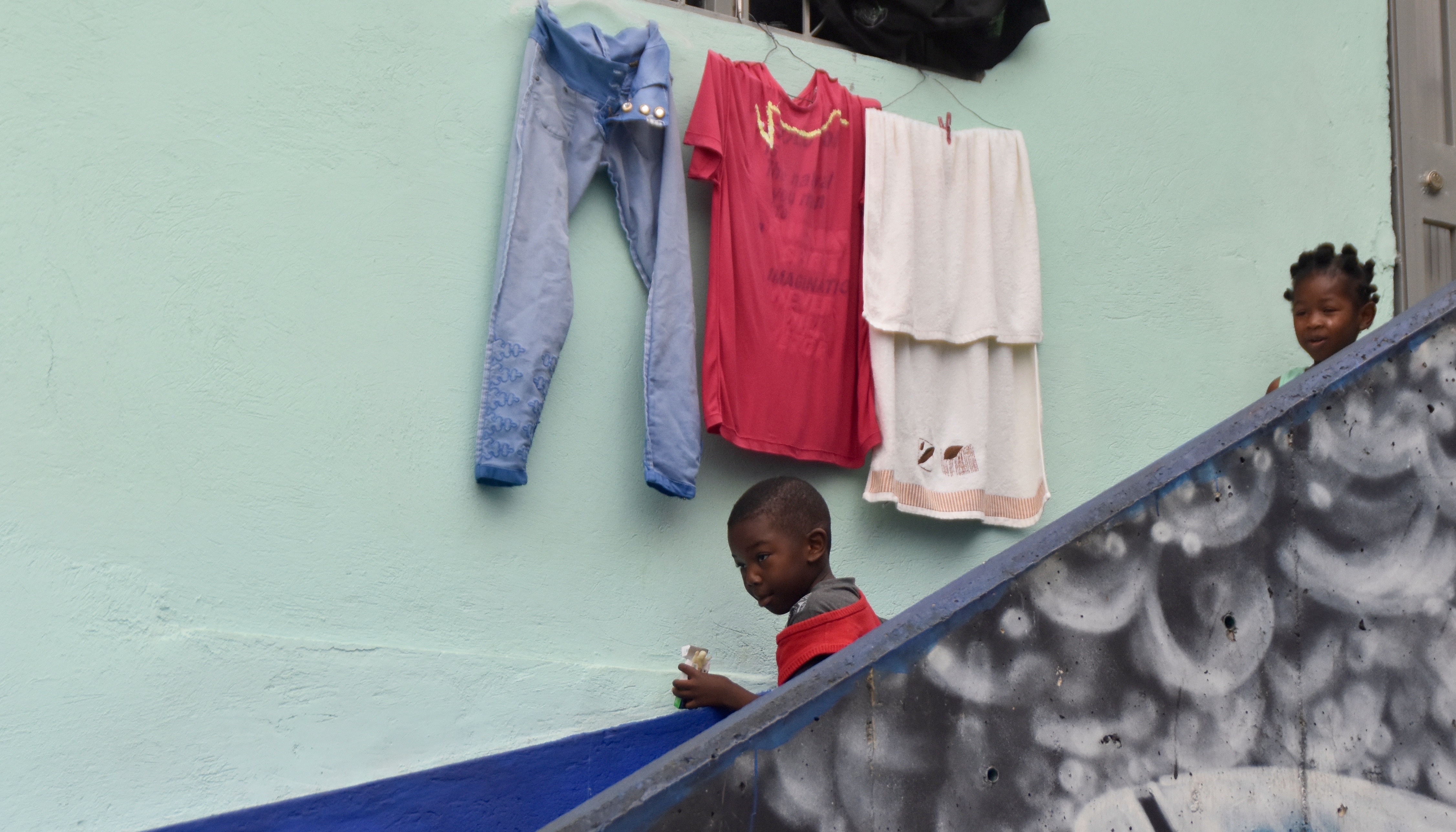
Jean concluded his history of Commune 13 with the worst horror to ever beset the place and it was at the hands of the people who were supposed to protect them – their own government. For almost a week in October, 2002 Commune 13 was completely sealed off by over 1,500 troops and randomly strafed by two Blackhawk gunships in what was called Operation Orion. Deemed a success by the government in clearing out the leftists, Jean scoffs at the ‘official’ version of events that say only a few people were killed. He thinks it more likely there were hundreds and that their bodies are buried in a large landfill that he points out on the other side of the valley. My subsequent research leads me to conclude that many Colombians share Jean’s views of what happened that week.
At first it appeared that the only thing that had changed after Operation Orion was that the right wing paramilitaries took over control of Commune 13 from the leftists. However, somehow the residents and in particular the women who were tired of losing their husbands, sons and even children to the violence, had had enough. They fought back, not physically, but with a campaign of hanging white sheets and towels from their windows, symbolizing the desire for a ceasefire and peace. Amazingly, it worked. Somehow, sanity was restored and the authorities realized that killing the residents of Commune 13 was not the answer, but rather that universal remedy for rising from poverty – education. For the first time and with the help of those escalators, the children of Commune 13 could make their way to the schools below. As we finished up our visit, we saw the kids in their uniforms returning to the barrio after attending classes. They were laughing and happy.
After completing his history of Commune 13, Jean then took us on a tour of some of the street art that had sprung up after Operation Orion. I wrote a previous post on the street art of the La Candelaria area of Bogota which is truly amazing. However, that street art is largely based on the distant past and the city’s connections with its indigenous people and their gods. The street art of Commune 13 directly references events that happened within living memory of most of its residents and frankly, without a guide, you wouldn’t have a clue what it’s all about. Here’s a quick tour of some of the most memorable pieces starting with this.
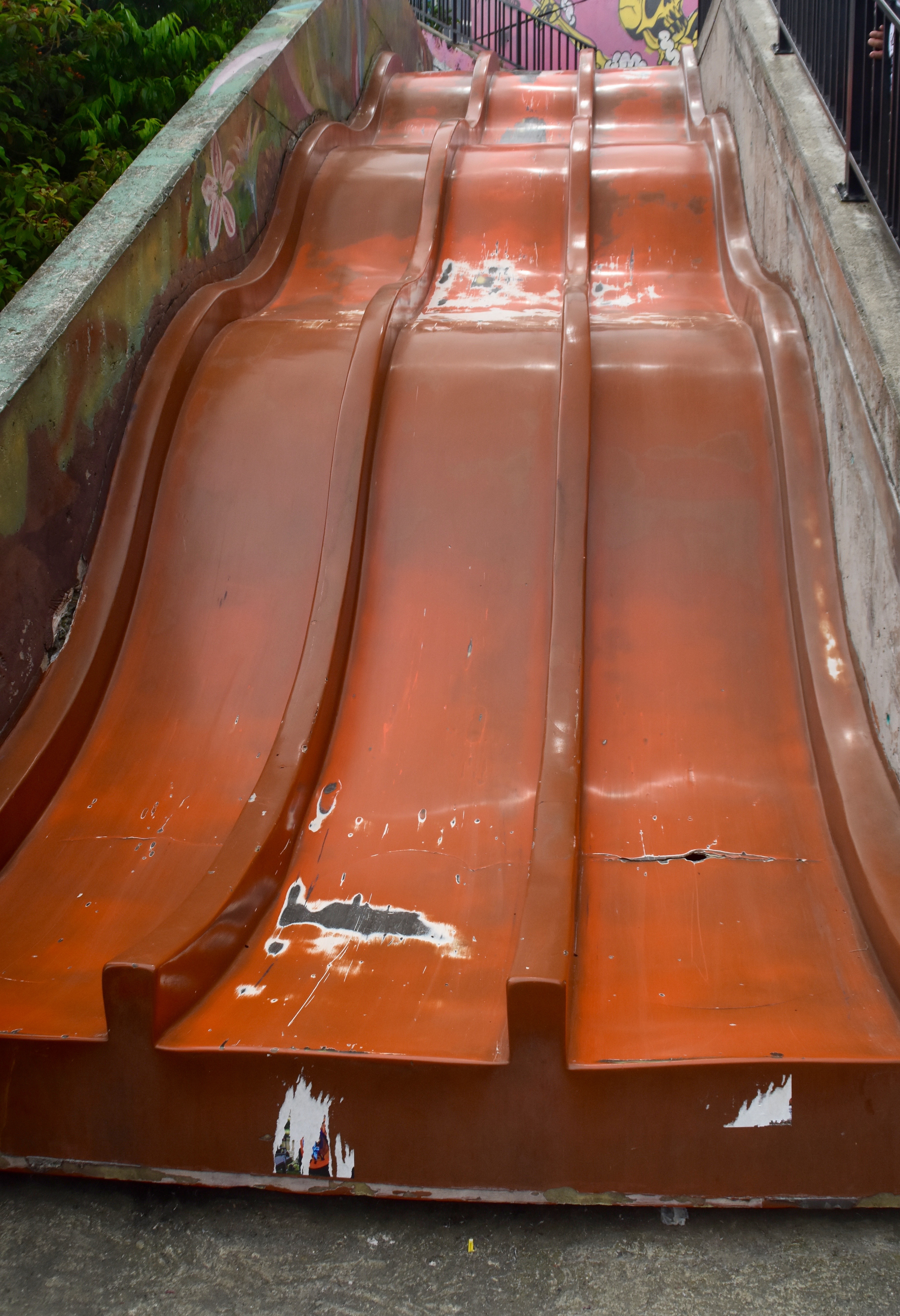
Yes, it’s a small slide connecting one terrace to another. But it’s also a memorial to a small boy, not unlike the little guy who was watching us in one of the photos above, who was killed by a stray bullet during the violence. Instead of a plaque or a statue, the people wanted this as a reminder of the innocent joy of childhood cut short by the stupidity of supposed adults.
Next something equally moving and disturbing. First Jean points out the rolling of the dice for Commune 13.
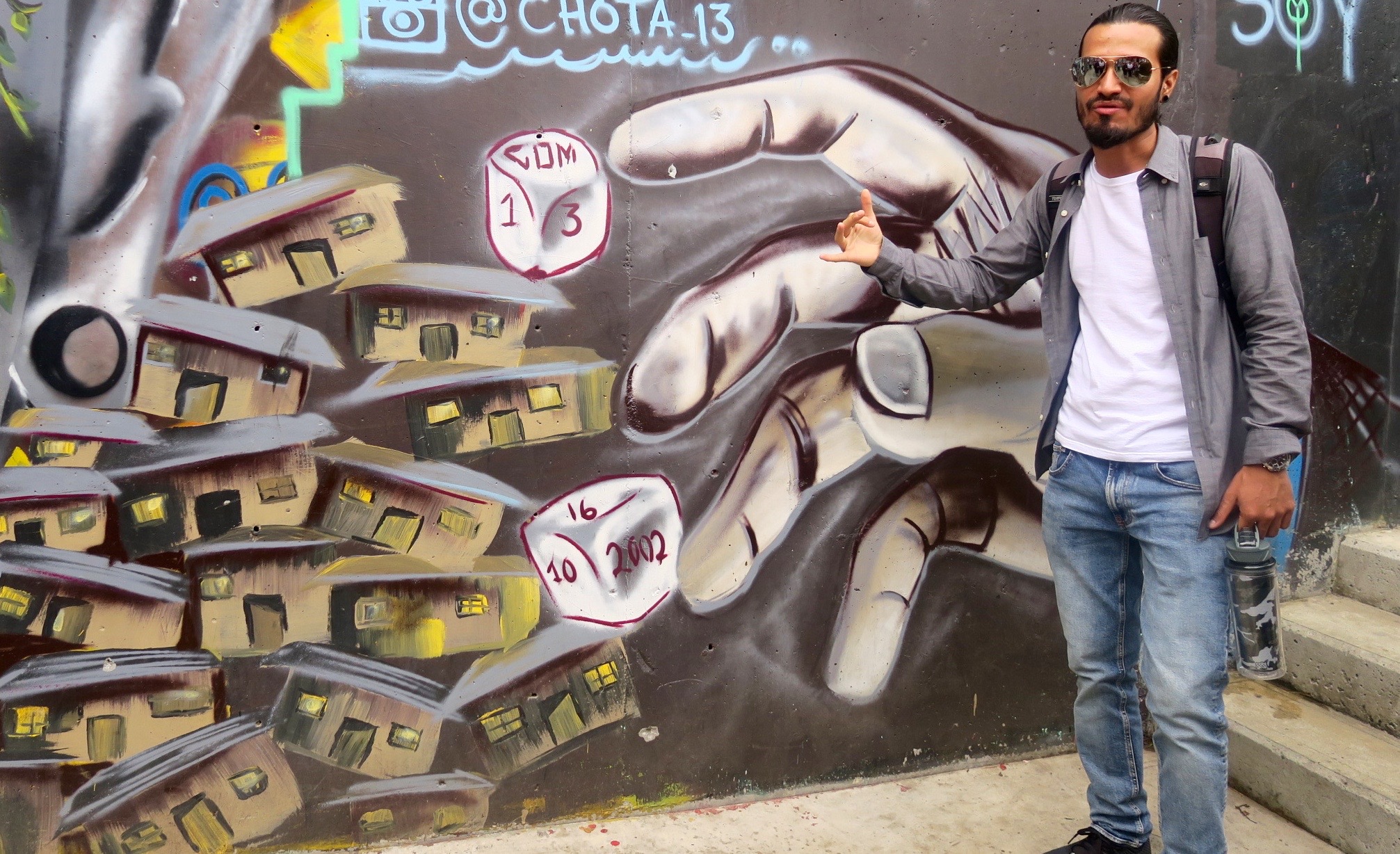
And here is a hummingbird, usually a symbol of peace and prosperity in Colombia, turned helicopter gunship leaving the houses of Commune 13 dripping with blood.
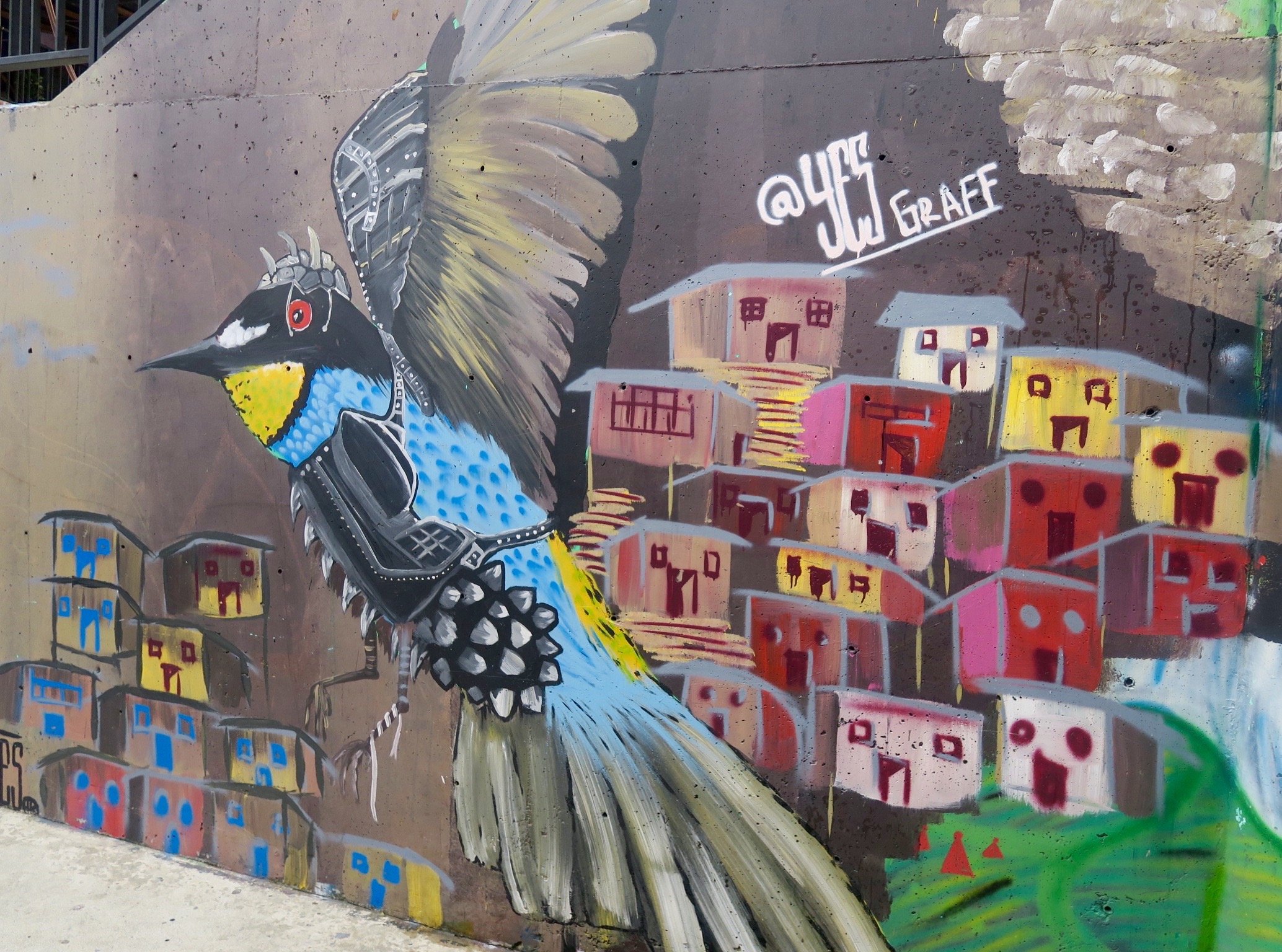
Have you ever seen a more abject look of terror? It is the look on a little girl’s face during the days the Blackhawk gunships hovered overhead shooting at anyone who moved.
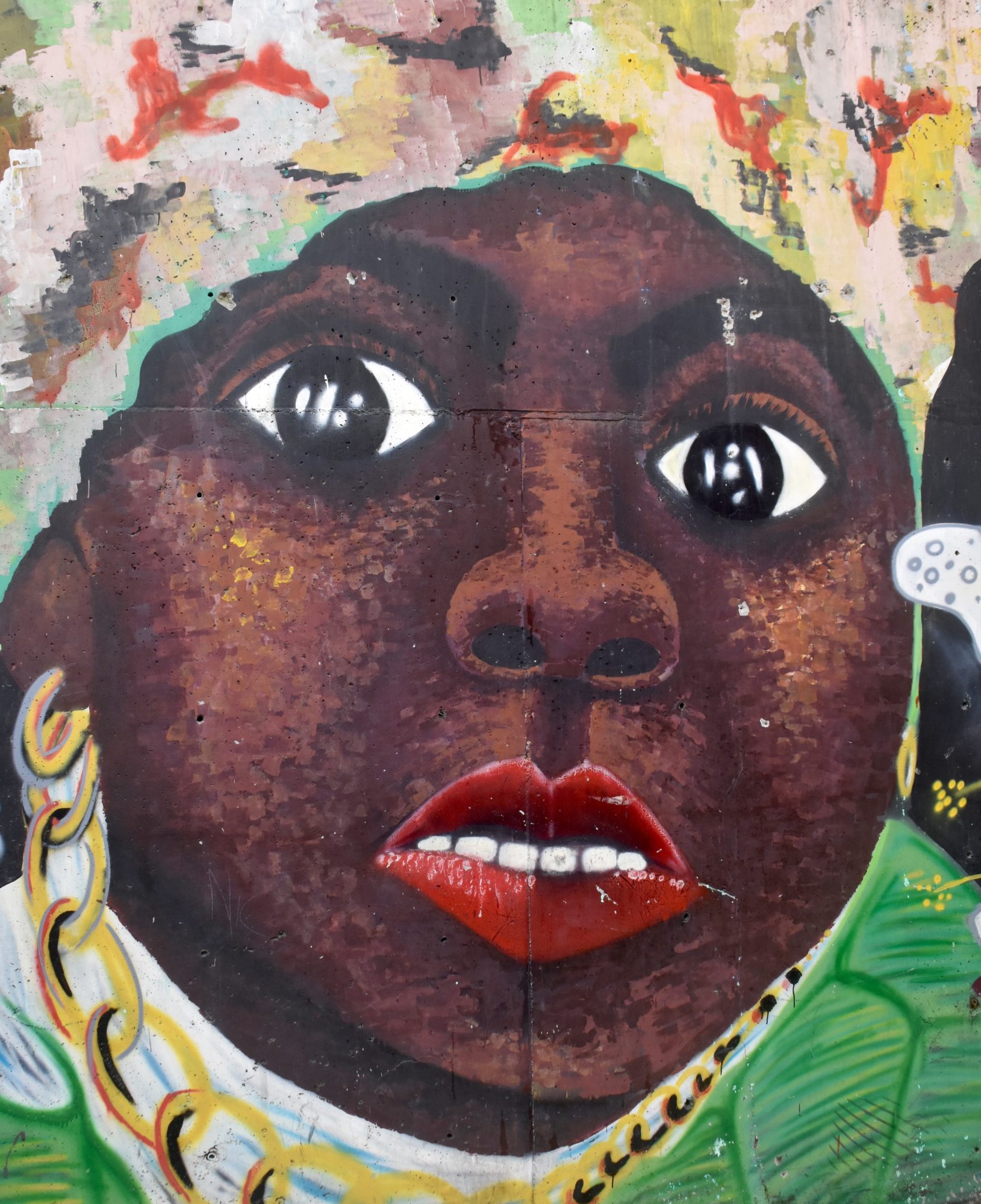
The crushing of the innocents or the compassionate saviour of them? Both interpretations are possible.
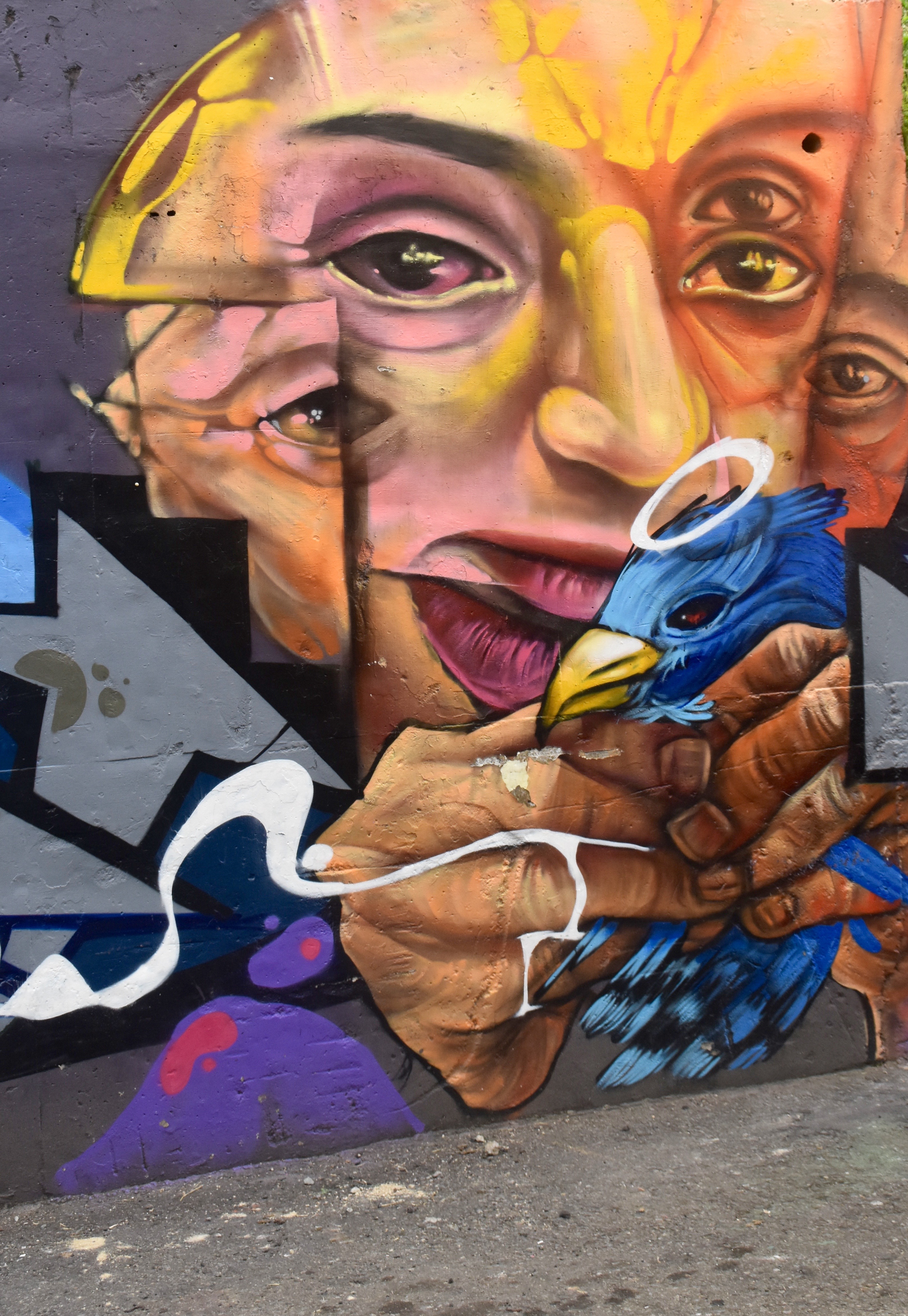
Elephants, the symbol of remembrance, waving the white towels of peace.

I could fill an entire gallery with the street art of Commune 13, but I’ll end it with these two boys, best friends. Across the street from this mural one boy was shot through a window in his home. His friend then carried him on his back toward safety when he too was shot. He died and his friend survived. They now share this space at the bottom of Commune 13.
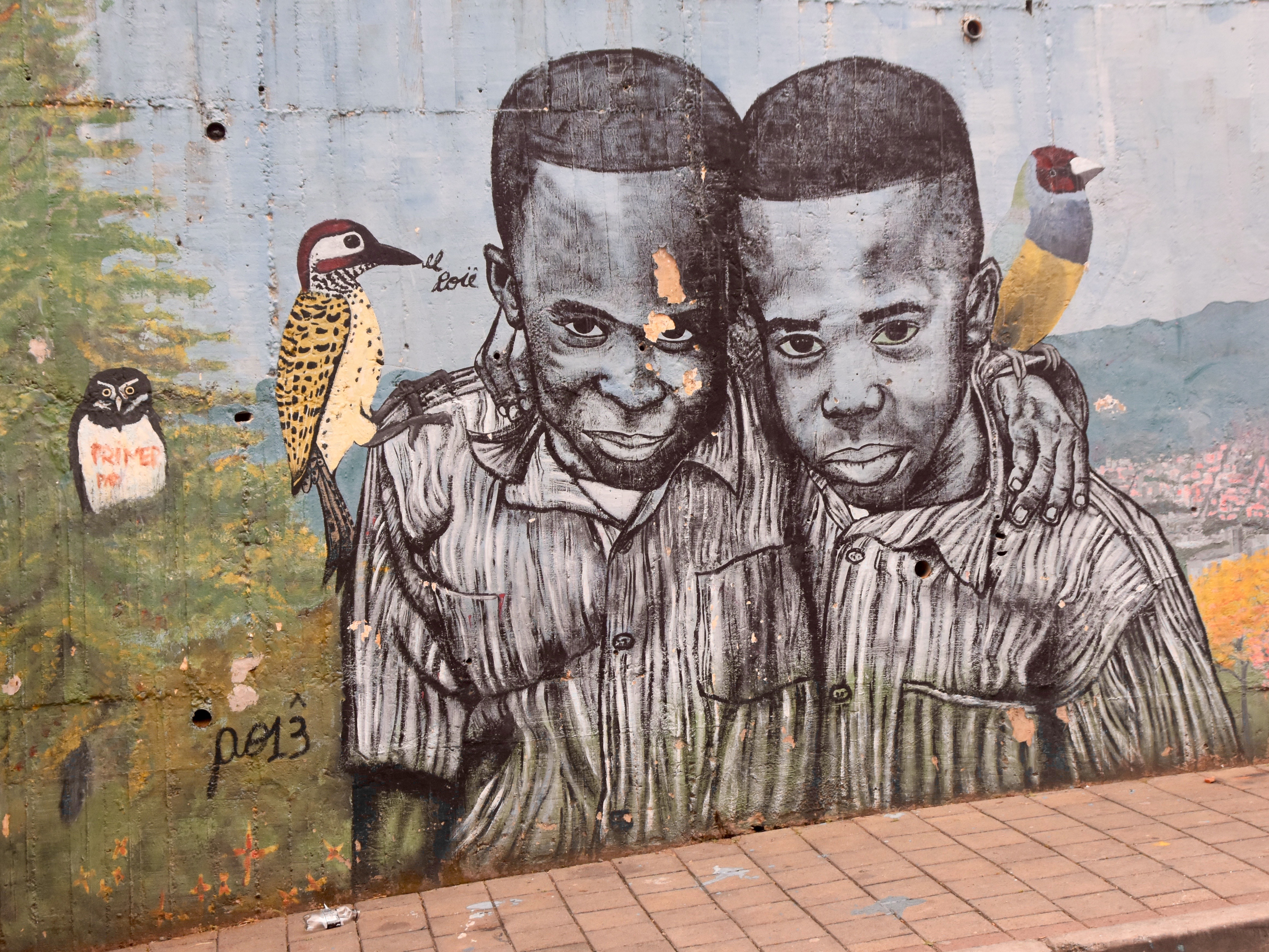
Not everything in Commune 13 is about the past. The reality is that the past is the past and the future is ahead and a lot brighter than the past. For one thing you can get the best paletas de mango in the country here. These are Colombia’s version of popsicles except that they are way better – a lot less sugar and way more tart. At the end of our visit Jean treated us all to these delicious palate cleansers.
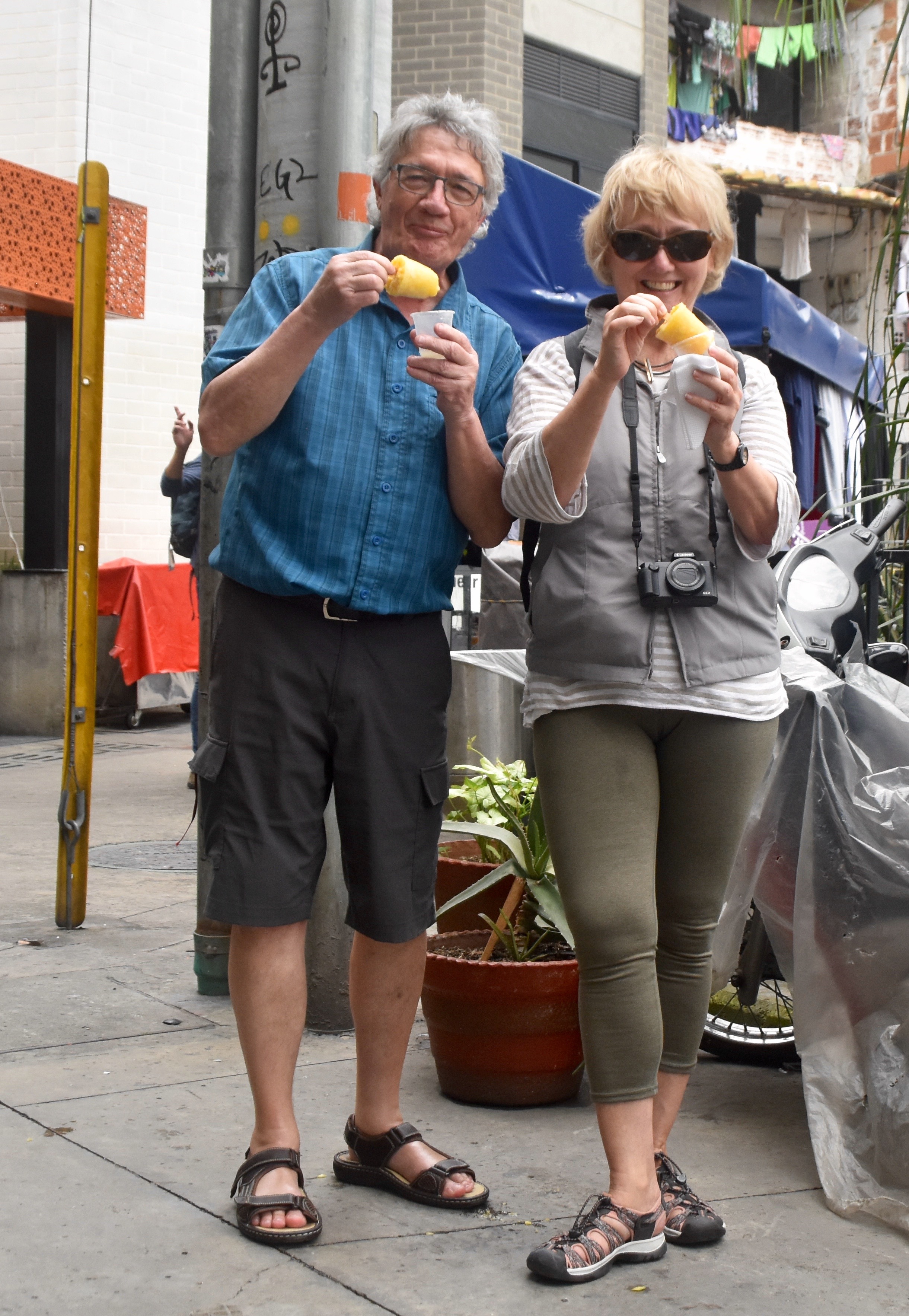
Visiting Commune 13 was, for me, one of the real highlights of the Adventures Abroad Colombia tour. It’s hard to call it a tourist attraction, but rather a place you need to visit to understand Medellin and the country in general. It’s why I travel.
To quote the great Moroccan world traveller of 14th century Ibn Battuta –
“Traveling – it leaves you speechless, then turns you into a storyteller.”
See you in Cartagena.

